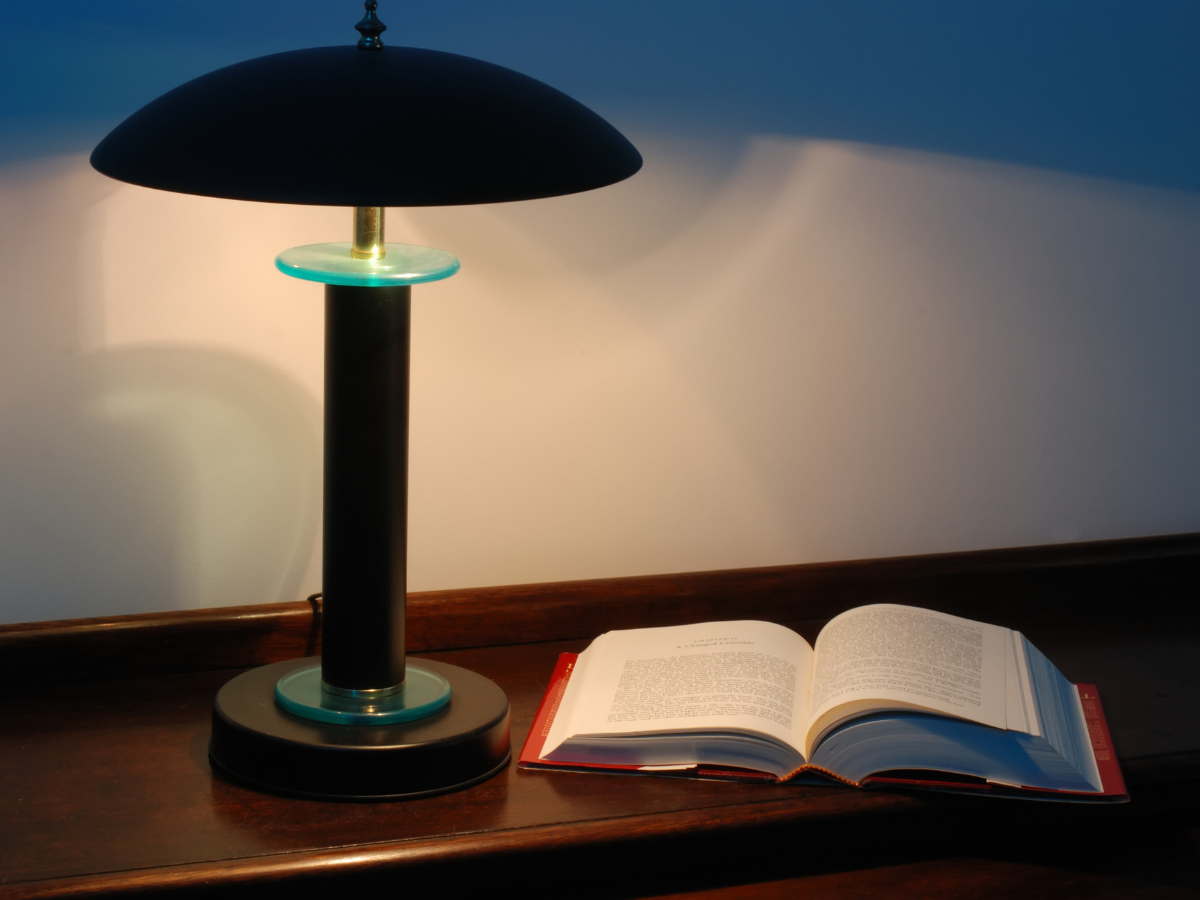Whether you're enhancing your work-from-home setup, creating the perfect reading nook, or tailoring your kitchen to meet your culinary needs, task lighting can significantly improve the functionality of your space.
Do you find yourself straining your eyes during the workday or struggling with precision while preparing meals, crafting, or reading? If so, task lighting might be the solution you’ve been searching for.
In this guide, we’ll cover everything you need to know about task lighting, including the different lighting options available, tips on where to use each in your home, and answer some frequently asked questions.
What is Task Lighting?
Task lighting refers to direct lighting designed to illuminate work areas where homeowners complete specific activities. Unlike ambient lighting, which targets overall illumination and aesthetics, task lighting adds visibility to a small, defined area. Whether working in your home office, cooking in the kitchen, crafting in your workshop, or welcoming guests, task lighting helps reduce eye strain and makes detailed tasks easier.
Many task lights are adjustable, allowing you to direct the light precisely where you need it and minimize distracting glares and shadows. This focused illumination can boost visibility, improve comfort, and enhance productivity.
 Types of Task Lighting
Types of Task Lighting
Task lighting comes in various styles, with some options requiring more installation effort than others. Here are the most common types you can incorporate into your home:
- Lamps: Ideal for those who desire an easy installation process, task lamps can provide focused lighting to desks, bedrooms, craft tables, and workbenches. Floor, desk, and table lamps are simple to set up—just plug them into an outlet. In many cases, lamps will be the easiest way to incorporate task lighting into your home.
- Cabinet Lighting: Under-cabinet lighting is an excellent way to add task lighting to kitchen countertops, craft rooms, and workshops. Cabinet lighting comes in various forms, such as puck lights (small disc-shaped lights), rope lighting, or LED strips. The installation process can range from simple to more involved, depending on the type you choose.
- Pendant Lights: For those preferring permanent fixtures, pendant lights offer stylish options that hang from the ceiling. They are commonly used in kitchens to illuminate islands, bars, and dining tables.
- Wall-Mounted Fixtures: Another source of task lighting, wall-mounted fixtures come in various shapes and designs. Some resemble large lamps, while others are more discreet and low-profile. You can introduce these permanent fixtures to add focused light to different rooms throughout your home.
Now that you're familiar with the types of task lighting available, let's discuss the benefits these lighting options can offer.
What Are the Benefits of Task Lighting?
Task lighting is a worthwhile addition to any home, and understanding its benefits is essential to choosing the right home lighting solutions for your space. Task lighting can help you enhance your ability to tackle detailed tasks, reduce eye strain, and boost overall comfort, making daily activities more enjoyable. Here are the key benefits of task lighting:
- Enhanced focus and productivity: Task lighting provides concentrated light in specific areas, reducing eye strain and improving focus, which leads to better productivity.
- Customizable illumination: Many task lighting options are adjustable, so you can direct the light exactly where you need it, accommodating different brightness levels and tasks.
- Improved visibility: It offers clear, direct lighting and enhances visibility for detailed work such as reading, writing, or crafting.
- Reduced eye strain: Proper lighting minimizes glare and shadows, reducing eye fatigue and making it easier to work for extended periods.
- Space-saving: Many task lighting options are compact or can be mounted, saving space on desks, workstations, and kitchen countertops.
- Flexibility: Portable task lights can be moved to different locations, offering flexibility in various settings.
- Curated environment: Task lighting allows homeowners to create a tailored lighting environment that suits their needs and preferences.
Now that we’ve covered its benefits, let’s move on to where you can strategically place task lighting in your home to maximize its impact.
Where to Use Task Lighting in Your Home
Task lighting can transform the functionality of any room when used optimally. Whether you’re trying to upgrade your kitchen, home office, or reading nook, understanding where to position task lighting can significantly improve each space’s comfort and efficiency.
Let’s explore the best locations for introducing these functional lighting options into your home.
Home Office
Task lighting in a home office minimizes eye strain and enhances productivity. Consider placing a desk lamp directly on your work surface or installing an adjustable wall-mounted fixture above to deliver focused light for writing, reading, or computer tasks. You can also consider adding under-shelf lighting to help reduce shadows, creating a well-lit workspace that provides comfort throughout the workday.
Workshop or Craft Room
You can position task lighting in a workshop or craft room to illuminate your workbench or crafting table. Use overhead lights or adjustable task lamps to ensure areas where detailed tasks are completed are well-lit, eliminating shadows and improving your precision. Once again, you can also utilize under-cabinet lights or strip lights mounted along shelves to enhance visibility further, make it easier to complete intricate tasks and maintain a well-organized workspace.
 Kitchen
Kitchen
Task lighting in the kitchen is vital for both safety and efficiency during food preparation. Install under-cabinet lights to brighten countertops and stovetops, making chopping and mixing safer and more efficient. Pendant lights over islands or bars can provide focused illumination for cooking and meal prep, while adjustable fixtures can help improve visibility throughout the kitchen and dining or seating areas.
 Reading Nook
Reading Nook
Creating an inviting reading nook is easy with the proper task lighting. Position a floor or table lamp with adjustable brightness next to your reading chair to provide ample light without causing glare. Opt for a lamp with a dimmer switch to fine-tune the brightness and light level based on your reading needs, ensuring a comfortable and relaxing experience as you enjoy each page of every book.
Illuminating Your Dream Home
Creating a well-designed and functional living space begins with thoughtful lighting. At Century Communities, we recognize that curated lighting is vital to enhancing your home’s usability and comfort.
That’s why we’re dedicated to delivering homes that are both beautiful and practical. Our attention to detail includes ensuring we thoughtfully design each home’s lighting so you can enjoy your space to its fullest.
If you’re ready to find your dream home, use our Find Your Home feature to explore newly built properties in your area.
Task Lighting FAQ
What's the difference between accent, general, and task lighting?
Accent lighting highlights specific areas or objects. General lighting provides overall illumination for a room. Ambient lighting increases aesthetics and provides mood lighting. Task lighting provides focused light in areas where homeowners complete specific tasks like reading or cooking.
How bright is task lighting?
The brightness of task lighting varies depending on the fixture, light source, and its purpose. In general, 250 to 1,100 lumens (40 to 100 watts) will be sufficient.
How can I use task lighting in my home?
You can use task lighting in your home by placing it in areas where focused illumination is needed, such as desks, kitchen countertops, crafting tables, workbenches, or reading nooks.


